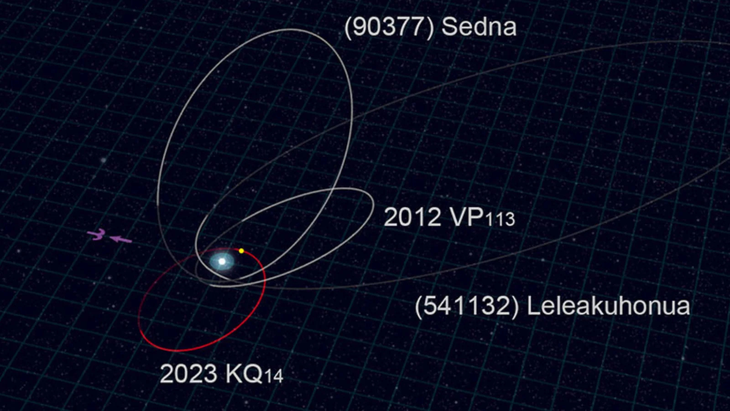
The position of the new celestial body in the universe has a very wide orbit - Photo: NAOJ
According to Nature Astronomy, the new celestial body named 2023 KQ14, nicknamed "Ammonite", is classified as a sednoid, belongs to the group of trans-Neptunian objects (TNOs), has a very elliptical orbit and a perihelion (closest to the Sun) located at a very large distance.
Specifically, the closest distance to the Sun of 2023 KQ14 is equivalent to 71 astronomical units (AU), which is 71 times the distance from Earth to the Sun. This celestial body has an estimated diameter of 220 to 380km, about 45 times the height of Mount Everest.
This is the fourth sednoid ever discovered. Although 2023 KQ14 currently has a different orbit than the other three, researchers believe that all four had similar orbits about 4.2 billion years ago, 400 million years after the formation of the Solar System. This implies that a major event occurred at the edge of the Solar System.
The discrepancy in 2023 KQ14's orbit also reduces the likelihood of a "Planet Nine", which is hypothesized to be a factor influencing the orbits of sednoids.
"The fact that 2023 KQ14's orbit doesn't match that of other sednoids makes the Planet Nine hypothesis less convincing. It's possible that a planet once existed and was later ejected, causing its current unusual orbit," said Dr. Yukun Huang, lead researcher at the National Astronomical Observatory of Japan.
The object was first discovered using the Subaru Telescope on Mauna Kea (Hawaii), during observations in March, May and August 2023. It was then confirmed using the Canada-France-Hawaii Observatory in July 2024. The new data, combined with 19 years of observational archives, helped reconstruct the orbit of 2023 KQ14.
To assess the stability of the orbit over billions of years, the team performed complex numerical simulations on a supercomputer at the National Astronomical Observatory of Japan. The results showed that the orbit of 2023 KQ14 remained stable for 4.5 billion years, nearly the age of the Solar System.
"2023 KQ14 is located in the far reaches of the Solar System where Neptune's gravity no longer exerts a significant influence," said Dr. Fumi Yoshida. "The existence of objects with such elongated orbits and large perihelions suggests that something extraordinary happened in the early days of the Solar System."
Yoshida also emphasized: "Currently, the Subaru Telescope is one of the few instruments on Earth capable of detecting celestial bodies like 2023 KQ14. I hope the FOSSIL team will continue to discover more similar objects, thereby contributing to completing the historical picture of the formation of the Solar System."
Source: https://tuoitre.vn/phat-hien-thien-the-khong-lo-moi-o-ria-he-mat-troi-20250717211633557.htm



![[Photo] Prime Minister Pham Minh Chinh chairs meeting to deploy overcoming consequences of storm No. 10](https://vphoto.vietnam.vn/thumb/1200x675/vietnam/resource/IMAGE/2025/10/3/544f420dcc844463898fcbef46247d16)



![[Photo] Students of Binh Minh Primary School enjoy the full moon festival, receiving the joys of childhood](https://vphoto.vietnam.vn/thumb/1200x675/vietnam/resource/IMAGE/2025/10/3/8cf8abef22fe4471be400a818912cb85)
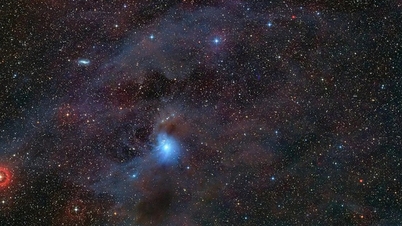
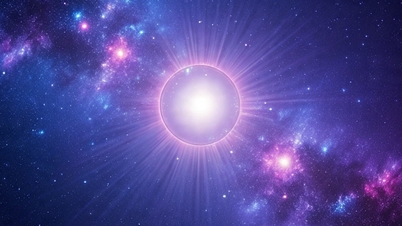

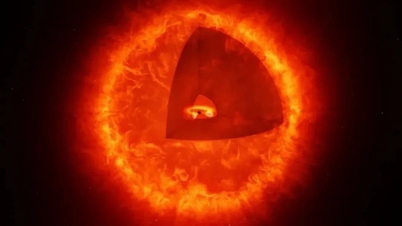

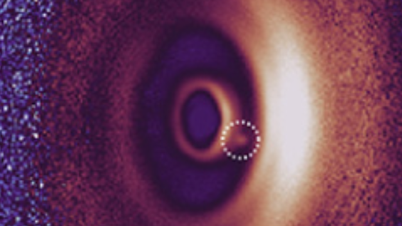









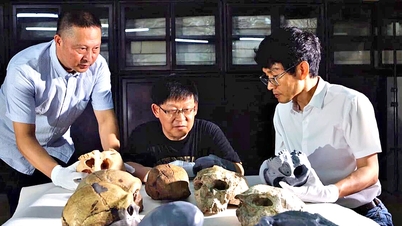
















































































Comment (0)